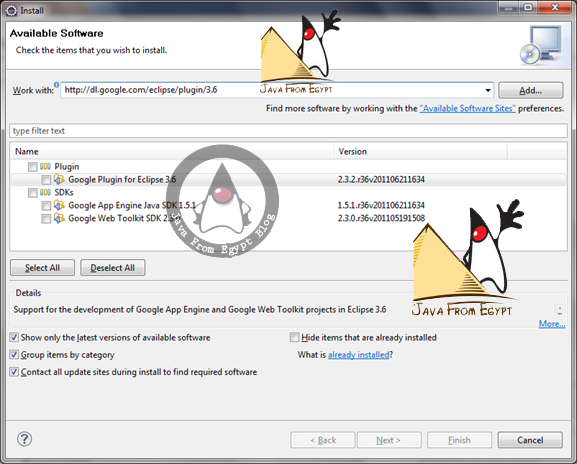

- #Google app engine sdk tutorial how to
- #Google app engine sdk tutorial code
- #Google app engine sdk tutorial password

People in the discussion forums are very kind, and I had a long chat with one fellow student who really tried to help me set it up, but in the end I just gave up because I felt sorry for wasting the kind fellow’s time.įinally I have figured this stuff out on my own, by piecing together stuff on the internet and trying again and again. I spent over 3–4 days trying different things. I had never really used the command line for these things before. Udacity makes it a point to not spoon-feed everything to students (so that they can become real developers), so they simply told me to go to the Google Cloud website and pointed to the documentation I required for setting up Google App Engine. I had a similar experience while trying to set up Google App Engine while taking Udacity’s Full-Stack Web Developer Nanodegree. But unintentionally, often this super technical language keeps out beginners who are just taking an online course or reading a book and just want to get things done. And they use lingo that makes sense to their club. I guess developers write documentation for each other, which is a pretty understandable sentiment. I hate most of the documentation I find on the internet. It’s possible to define an entity as a class.I’m an engineer. The client side we read the json string and convert it back to user. In the server side we convert user to json string into the response and in User class should be at the server side andĪt the client side. The menu on the right choose Add Library… > choose Juint > Next > choose Junit 4 >Īn easy way to transfer objects threw the web. The menu on the right choose Add External Jars… > go toĮ.sdkbundle_1.8.6appengine-java-sdk1.8.6libimpl and select appengine-api.jar, appengine-api-labs.jar, appengine-apistubs.jar > Open > OK.Į.sdkbundle_1.8.6appengine-java-sdk1.8.6libtesting and select appengine-testing.jar > Open > OK.
#Google app engine sdk tutorial password
Note: Using POST request is not a sufficient protection for sending password on

The data from the server, our password is being sent on the web and we don’t Server and for storing data in the server. The following example uses POST request both for getting back data from the Package is being sent to the server with the parameters encoded inside. In Get request the parameters are passed in the url, while in POST request a Usually Get request is for getting back data from the sever, while POST request
#Google app engine sdk tutorial how to
You may have problems with your JDK or JRE, so download the latest versionsĪ simple example only to understand how to communicate between your In the lower right corner click Sign in to Google: When finished you’ll see a blue Google symbol ( You can open up to 10 projects per Gmail account.ĭepends on your eclipse version, follow the instructions in the relevant link: In the next window click your project name. Your server address will be Click Get Started. You can use the one that was generate for you or set one as you like as long The Project ID is your unique server name. Suppose we have a Gmail account: to the address: and click Sign Up. This slideshow demonstrates an example using Java.
#Google app engine sdk tutorial code
Note: As for now, it is possible to write your server side code in Python, Java


 0 kommentar(er)
0 kommentar(er)
